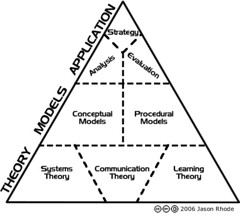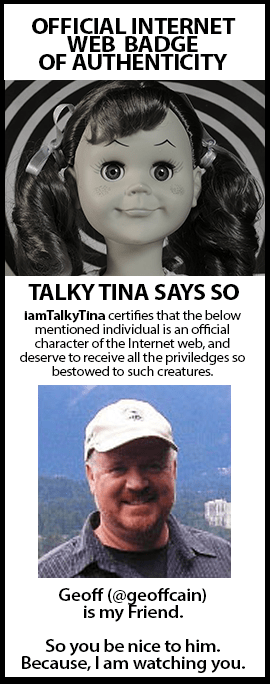Note: The following is an extended abstract for a paper. I was in the process of sending this out to journals when I realized that this needs to be an open document. I have always found the publishing process in education to be somewhat ironic: scholars publish papers on open education in journals that colleges can no longer afford to buy. What is wrong with this picture? If you are interested in MOOCs and Instructional Design, please email me or leave a comment if you would like to collaborate. I will be submitting it to open journals or we may turn it in to an openly licensed book or modular OER. This feels like it belongs on a wiki. Maybe we should create a MOOC to develop these ideas?
Just as we need a new learning theory to account for new modalities in learning, we also need a new framework for instructional design, a rubric for MOOC development. New modalities of learning, content delivery, and engagement in online, hybrid courses and Massive Open Online Courses (MOOCs) have required new learning theory: Connectivism. Given this new theory, this paper suggests that a new instructional design model is needed as well. According to my reading of Connnectivism, instructional design for MOOCs should:
● Provide for a diversity of opinions
● Allow students to create connections between specialized nodes and learning sources
● Foster their capacity to learn (teach metacognitive learning skills)
● Increase their ability see connections between fields, concepts, and ideas
● Teach students to build networks that will allow students to keep current in their field
● Allow students to choose what to learn and how
Additionally, in a presentation that George Siemens gave on instructional design for the MOOC “Connectivism and Connective Knowledge 2008” he said that learning should be designed for adaptability, for “patterning, wayfinding, and sensemaking” and focus on “content, context, and connections.” Siemens says that it is difficult to take all of this and try to build some mechanistic formula for creating learning experiences. This paper will introduce a new rubric of connectivist learning theory as applied to instructional design in order to examine and explain how successful learning takes place in MOOCs.
There are many definitions for “instructional design.” Some definitions are particularly narrow and limit the role as relating learning to technology. For the purposes of this paper, I will use Sheninger’s (2010) which is fairly broad:
“Instructional Design (ID) is part creative arts and part science which utilizes theoretical as well as practical research in the areas of cognition, educational psychology, information technology, graphic and Web design, and problem solving. ID aims to create the best instructional environment and learning materials to bring a learner from the state of not knowing, not feeling or not being able to accomplish certain tasks to the state of knowing, feeling and being able to accomplish those tasks in a given subject area through carefully organized interactions with information, activities and assessments.”
MOOCs are a relatively new modality of online learning and the basic research is still in its infancy, but this paper will develop its thesis and argument from research into Connectivist pedagogy, an analysis of the author’s experiences in MOOCs, and interviews with instructors and participants.
The kinds of problems that we can solve with instructional design include student success and retention. Just as some students need help in understanding how online education works (motivation, time management, study skills, etc.), students will also need help in understanding how to successfully take a MOOC. The skills students need to be successful can be built into curriculum. Many of the more successful MOOCs are based in colleges where the students are already successful learners, but this doesn’t mean that MOOCs are only appropriate for those colleges.
Another problem is teacher preparation. Just as teachers need to learn how to be successful online teachers, the facilitation skills needed in a MOOC are different. It is a very different, certainly non-hierarchical model. There are ways to structure assignments and activities in a MOOC that will model the skills needed to be successful in a MOOC.
I would like to include a review of the literature of connectivism that compares Connectivism with previous models shows that as the teaching and learning modalities change, so do the theories. Theories such as Constructivism do not fully account for full online courses, hybrid online courses, personal learning networks, or MOOCs. Applying Connectivism to instructional design requires a redefinition of instructional design along the same lines as the changing role of the teacher (Siemens, 2010). The principles of instructional design, which includes a systematic approach to designing course content and learning events, will inform the creation of MOOC development rubric that will be included with this paper.
This project will include definitions of the skills, student success, and include a guide to the connectivist pedagogy for successful online learning and successful participation in a MOOC.
Consider this posting as a preamble. I am especially interested in hearing back from teachers with experience in online education and MOOCs, instructional designers, and other practitioners.






